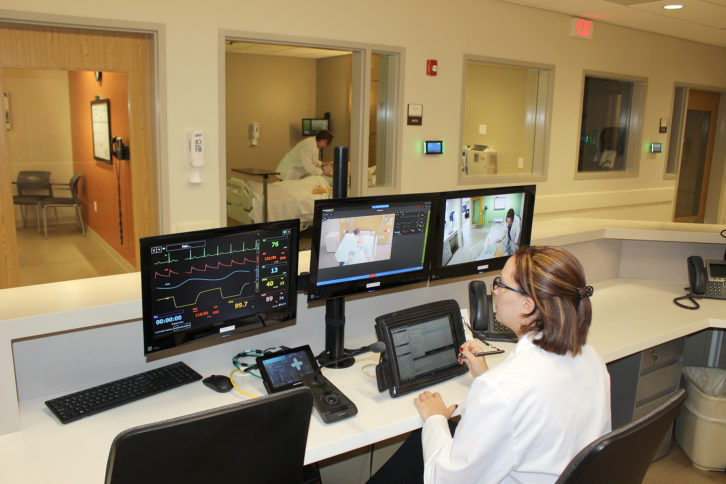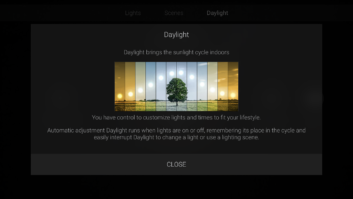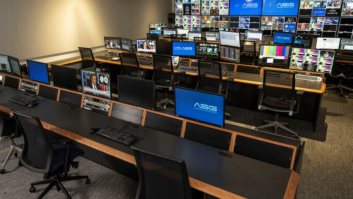
Nanomedicine, telehealth, diagnosis via AI, virtual clinics, 3D-printed organs: these may be among the attention grabbers in healthcare technology – yet in many countries, emergency surgery is required when it comes to basic digital infrastructure. In the first part of our feature on AV in the healthcare industry, Ian McMurray finds out about an initiative designed to address the problem in the UK.
Earlier this year, the UK government published a policy paper – “The future of healthcare: our vision for digital, data and technology in health and care”. Among other things, it noted that “the state of online services, basic IT and clinical tools in health and care is far behind where it needs to be. Despite much good practice and some pockets of excellence, for many people – patients, service users, carers and staff – we still need to sort the basics. Technology systems used daily across hospitals, GP surgeries, care homes, pharmacies and community care facilities don’t talk to each other.”
It was followed a few months later by the announcement of NHSX. The announcement reiterated the theme.
“Currently, much NHS technology relies on systems designed for a pre-internet age. Patients are not getting the care they need because their data does not follow them round the system. Change has been slow because responsibility for digital, data and tech has been split across multiple agencies, teams and organisations. NHSX will change this by bringing together all the levers of policy, implementation and change for the first time.”
Among its stated goals are setting standards – developing, agreeing and mandating clear standards for the use of technology in the NHS, the UK’s government-managed healthcare service, and ensuring that NHS systems can talk to each other across the health and care system.
Harmonisation
The overarching goal of NHSX, then, appears to be the interoperability that is a natural outflow of standardisation. That goal will, of course, be primarily achieved via the harmonisation of the NHS’s allegedly chaotic IT systems. However, with the growing integration of audiovisual solutions within the IT network, it is inevitable that this substantial change in policy in direction will also have an effect on AV suppliers – in areas such as conferencing/collaboration, teaching/education, digital signage, IPTV and much more.
That assertion is borne out by Brad Grimes, who is senior director of communications at AV industry trade association AVIXA.
“According to our most recent Industry Outlook and Trends Analysis, the market for pro AV products and services in healthcare was approximately $2 billion worldwide in 2018,” he notes. “We are projecting 10% growth through 2023, making healthcare the fastest-growing of the markets we track.”
But what of those currently operating in the space? Pure AV, for example, is an integrator specialising in the healthcare market and an approved supplier on the NHS Shared Business Services (SBS) framework.
“If this new body can bring a renewed focus on digital transformation in the NHS and on standards to support compatibility and interoperability, it should only increase the opportunity for our services within the healthcare sector,” believes the company’s group sales manager Aidan Crowe. “The technologies and advances within the AV market place over the past two to three years, notably around flexible working and communication have a lot to offer NHS staff and patients. However, the complex structures in place within the NHS mean that those potential benefits are slow to be realised.”
New frameworks
Crowe is not alone in his enthusiasm. “We understand that one of the objectives for NHSX will be reforming procurement – helping the NHS buy the right technology through the application of new procurement frameworks that support these standards,” says Kiran Sanghera, manager, product managers, VI [Visual Instruments] business at Epson. “This will definitely benefit our business as Epson is able to provide solutions to healthcare that allow staff to make patients their priority. These days, it’s all about seamless workflows, faster communication and quicker connectivity, which Epson can deliver on in today’s fast-paced working environments, as our devices are built around end-user usage scenarios and job efficiency.”
“Uniformity and compatibility are very valuable,” adds Olivier Vanovermeire, chief medical officer, who acts as a consultant to Barco’s healthcare business, offers what it describes as high-precision display systems for a broad range of healthcare disciplines, including radiology, mammography, surgery, dentistry, pathology, point-of-care and clinical review imaging.
“They save a lot of time and money in staff training – and staff can more easily move around,” Vanovermeire continues. “It is the same with implementing standards in communication and data exchange: in radiology, for example, we are spoiled with the DICOM standard – but in other segments, the data flow is sometimes challenging between different software packages.”
He goes on to note his belief that the NHSX initiative is primarily about cost saving – in itself a worthwhile goal for an organisation that seems to be perpetually cash-strapped and lacking adequate resources.
“Budget will always be a barrier to technology adoption,” says Crowe. “Whether the development of the NHSX brings with it access to more money remains to be seen. To help, we increasingly offer OPEX payment models – away from the restrictions that CAPEX can face. The offer of a complete solution with embedded service and support wrapped within an OPEX payment structure can enable investment in much-needed technology and solutions where upfront budget is simply not available.”







